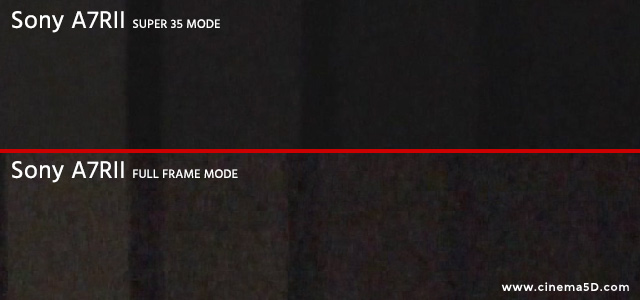Sony A7R II vs A7S Lowlight Review
We’ve been quite busy at cinema5D reviewing the new Sony A7R II (see our field review here and preliminary lab test here). The successor to the famous Sony A7S has left us impressed, but many are asking if it can provide the same legendary lowlight capabilities. Here’s our Sony A7RII vs A7S Lowlight Review, so we’re about to find out.
How good is the Sony A7R II in Lowlight
As a small camera with a large sensor that shoots 4K (UHD) internally the Sony A7RII is already an amazing piece of gear. Dialling up the ISO we notice that it’s quite capable to shoot even in lowlight environments.
However the question is how good it really is, so we don’t get caught by surprise with unusable footage after we come back from a shoot.
Many people think that there’s a way to put a number on a camera’s performance, but multiple tests and reviews have showed us otherwise: Camera sensors are complex and inconsistent depending on the way they are used, so we need to learn and experience the camera’s performance in order to use it correctly. It certainly helps to compare a sensor to a reference to get a better perspective.
This is where the Sony A7s in an obvious choice. It is one of the most lowlight sensitive cameras we know and has a lot in common with the new A7RII. With its high ISO rating the Sony A7s was (and still is) a perfect tool for documentary style cameramen.
The Test: A7R II vs A7S
For this test we used two identical Zeiss Loxia 50mm F/2 (Sony E-mount) lenses on the Sony A7RII and Sony A7s and filmed our test chart at the same time. For the purpose of the test we zoomed into lowlight critical areas of the frame. 400% on the Sony A7s’s HD footage and 200% on the A7RII’s 4K (UHD).
On first sight it might appear as though the noise floor is similar, but in our video above you can upon close inspection see that the A7s retains better detail throughout. At around ISO 8,000 the Sony A7RII shadow areas get more and more washed out and some detail is lost. Noise performance is still good and in many situations the footage beyond ISO 10,000 and even up to 25,600 might still be usable for you, but look out for those washed out dark areas.
The Sony A7s in comparison holds a very clean image all the way up to ISO 25,600. Noise gets severe beyond that point, but detail is retained quite well in comparison to other cameras, which makes it such an impressive lowlight tool.
If you want to be on the safe side you should be careful not to expose beyond ISO 6,400 on the new Sony A7RII, but if your final output is HD and web content you might find that even ISO 25,600 is possible without too much noise on the Sony A7RII. The fact of the matter is that you should make your own tests, find out and get a feeling for how far you can and want to push your footage to get the images look the way you like.
Sony A7R II Full Frame Mode?
One thing we already noticed last friday was the tremendous difference in lowlight performance between Crop Mode and Full Frame Mode on the new Sony A7RII.
Below you can see the last 4 steps of dynamic range on both Crop Mode (super35) as well as Full Frame Mode at ISO 6400. You can also observe this in the video above.
[Update]: The fact that the Sony A7RII delivers good results at a super35 sensor size is great news and actually quite a big thing. Bror Svensson reminded us that this is the ideal scenario to use the new Metabones Speedbooster ULTRA that can increase the lowlight capabilities by another stop with a manual full-frame lens.
Conclusion
- The Sony A7R II is good in terms of lowlight and certainly very good in comparison to many other 4K cameras out there.
- The noise floor of the Sony A7R II vs A7s seems similar, but the footage is cleaner on the Sony A7s.
- In terms of detail the Sony A7s can retain usable quality up into high ISO’s while the Sony A7R II lacks detail much sooner. We start to notice this in the shadow areas around 6,400-10,000 ISO. Shadow areas get washed out and become less usable even on an HD downconversion that we compare to the Sony A7s original as seen in the video above.
According to our observations it seems as though the Sony A7s is the better lowlight camera by a few stops. Picture quality in lowlight is more consistent up into the high ISO’s in comparison to the new Sony A7R II.
Download the source file at Vimeo to make your own observations: LINK
Please consider getting your camera and gear through this link. Thank you
Music by themusicbed.com
Skywide – City Streets

























